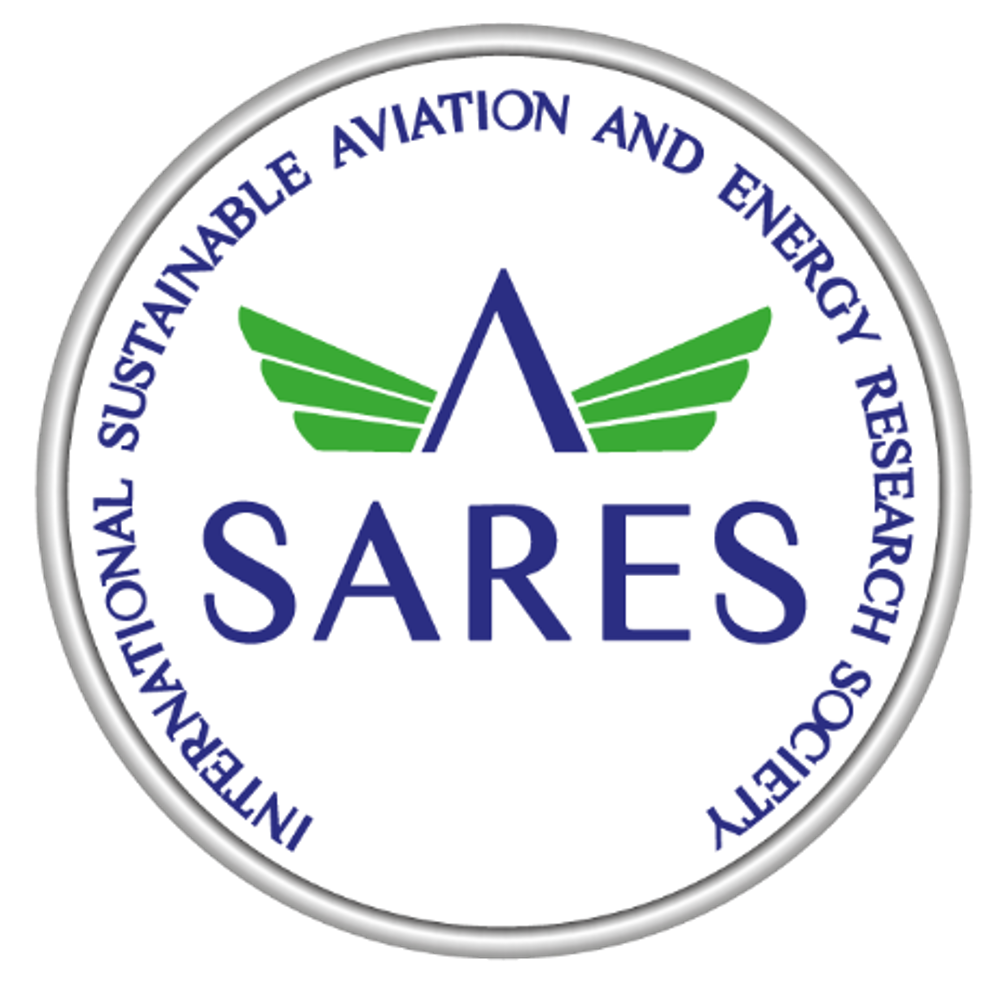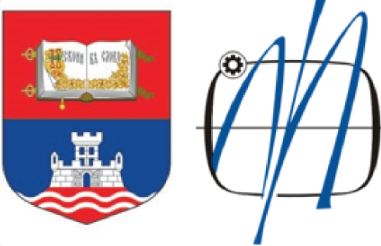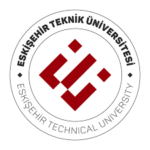Keynote Speakers
(Names sorted in alphabetical order)

Alper Dalkıran
Suleyman Demirel University, School of Aviation, Türkiye
Presentation Title: LCA Applications and Benefits in Airport Premises
LCA Applications and Benefits in Airport Premises
Life Cycle Assessment (LCA) is an essential tool for evaluating the environmental effects associated with the entire life cycle of products and services, including those found in airport operations. By analyzing inputs, outputs, and potential environmental effects, LCA helps decision-makers identify significant environmental concerns and make informed choices among various alternatives. In airport premises, LCA can be applied for energy used and infrastructure areas to enhance sustainability and reduce ecological footprints. Airports are energy-intensive facilities, and LCA can help assess the energy consumption patterns associated with various operations, from terminal buildings to ground support equipment. By identifying high-energy processes, airports can implement energy efficiency measures, explore renewable energy sources, and optimize energy management strategies. The construction and maintenance of airport infrastructure, including runways, taxiways, and terminals, have substantial environmental effects. LCA can evaluate the materials used.
Alper Dalkiran, PhD, has received his bachelor’s degree in Faculty of Aeronautics and Astronautics at Eskisehir Technical University (Formerly known as Anadolu University) from the Avionics Department. He has completed his MSc degree in the School of Science from Anadolu University in 2004 in Aviation Maintenance. He earned his Ph.D. degree in 2017 in Environmental Sustainability on Airports from the School of Science at Anadolu University by developing a model of energy-based calculations of an aerodrome. He has studies on aircraft engines, sustainability, airports, and exergy. He has a 17-year of professional experience in Airports in Information Technology, Automation, and Integration. He has managed teams on system design, projects, tests, commissioning, operational readiness, and operations. He has been working in the School of Aviation at Suleyman Demirel University since 2019 and lecturing in Flight Theory, Airline Management, and Airport Design subjects. He was promoted to Associate Professor degree in 2024.
- Sustainability
- Green Airports
- MRO
- Airport Systems
- Systems Integration

Chingiz Hajiyev
Istanbul Technical University, Faculty of Aeronautics and Astronautics
Presentation Title: Probabilistic-Adaptive Kalman Filtering for Fault-Tolerant Estimation of UAV States
Probabilistic-Adaptive Kalman Filtering for Fault-Tolerant Estimation of UAV States
A probabilistic-adaptive Kalman filter (pAKF) algorithm for the fault tolerant estimation of unmanned aerial vehicles (UAV) dynamics in the presence of measurement faults is proposed. The proposed pAKF based on the evaluation of the posterior probability of the normal operation of the system, given for the current measurement. This probability is proposed to calculate via the posterior probability density of the normalized innovation sequence at the current estimation step. As a result, faults in the estimation system are corrected by the system, without affecting the good estimation behaviour. The pAKF algorithm is used for fault-tolerant estimation of UAV dynamics. The proposed pAKF is tested for the different measurement malfunction scenarios.
Prof.Dr. Chingiz Hajiyev, graduated from Moscow Aviation Institute, Moscow, Russia, with honors in 1981. He received his Ph.D. and DSc (Eng) degrees in Process Control in 1987 and 1993, respectively.
From 1987 to 1994 he worked as a Scientific Worker, Senior Scientific Worker, Chief of the Information-Measurement Systems Dept. at the ASPA “Neftgazavtomat”. From 1994 to 1996 he was a Leading – Scientific Worker at the Institute of Cybernetics of the Academy of Sciences of Azerbaijan Republic. He was also a Professor in the Department of Electronically-Calculated System Design, Azerbaijan Technical University, where he had been teaching 1995-1996.
He joined to Department of Aeronautical Engineering, Istanbul Technical University, Turkey in 1996 as a Professor. From 2016 to 2023, he was also Head of the Aeronautical Engineering Department. He is the author about 600 scientific publications including 15 books, 26 book chapters and more than 400 international journal and international conference papers. More than 100 scientific papers are published in the Science Citation Index Expanded (SCIE) journals. His research interests include attitude determination and control, fault diagnosis, fault tolerant control, Kalman filtering and integrated navigation systems.
- Navigation
- Fault diagnosis
- Fault tolerant control
- Kalman filtering
- Satellite attitude determination and control

Deniz Daştan
Affiliations
Presentation Title: Sustainable Aviation Applications: Examples from Turkish Airlines
Title
Abstract
Mrs Dastan has started her career at Turkish Airlines as an environmental engineer in May 2011. Following her duty as Quality Management and Development Manager which took place in 2017, she has been currently working as Corporate Sustainability Manager since 2020. She graduated from Sakarya University Environmental Engineering Department and has master degree at Business Administration from Beykent University. She manages the certification processes of the ISO 14001, ISO 14064 and IATA Environmental Assesment-IEnvA management systems at Turkish Airlines. She is responsible for environmental and sustainability issues along with the environmental management systems at Turkish Airlines. Performing evaluations, monitoring the legal laws and regulations, assessing enviromental aspects and impacts of Turkish Airlines activities according to ISO 14001 Environmental Management Systems, reporting the results of assessments to the top management. Also, she is responsible for the management of the processes of monitoring, reporting, evaluating and verification of the greenhouse gas emissions according to the ISO 14064 Greenhouse Gases- Specification with guidance at the organization level for quantification and reporting of greenhouse gas emissions and removals, Carbon Offsetting and Reduction Scheme for International Aviation (CORSIA), European Union Emissions Trading System (EU_ETS), UK Emissions Trading Scheme (UK-ETS) and IATA Environmental Assesment-IEnvA Management System Program. She is in charge of monitoring and reporting the activities carried out in the organization, which are related to the climate action. The Corporate Sustainability Management bears the duty of Sustainability Committee Secretariat, in parallel with that Mrs. Dastan is responsible for following the decisions taken by the committee, reporting the projects and practices implemented by the relevant units of the company to the Sustainability Committee. She constantly follows the developments in the aviation sector and leads the communication and coordination with the relevant units in the company in terms of researching and implementing improvement projects that will increase the sustainability performance of Turkish Airlines. She is also responsible for conducting the reporting processes of Sustainability Report, Carbon Disclosure Project (CDP) and Task Force on Climate-related Disclosures (TCFD) at Turkish Airlines. Responsible for the management of the processes concerning the sustainability performance evaluations such as S&P Global/DJSI, FTSE Russell, MSCI, Ecovadis, TPI and Sustainalytics, she also conducts the improvement studies to be carried out within the Company in order to improve the ratings in these national and international ESG indexes. She makes effort to support the Company to receive global recognition for its sustainability-focused activities by the national and international sustainability recognition and award organizations or programmes.
- Sustainable Aviation
- Aviation Management
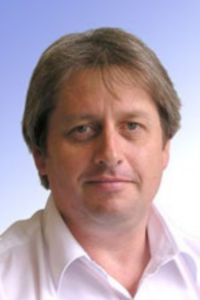
John Olsen
University of New South Wales, Australia
Presentation Title: Further aspects in the development of a proton exchange membrane fuel cell light aircraft
Further aspects in the development of a proton exchange membrane fuel cell light aircraft
In previous work, some initial thoughts on the possibility of using a stack of individual proton exchange membrane fuel cells to power an existing light aircraft were presented. This stack liberates the energy contained within cryogenically stored hydrogen enabling electricity to carry the energy via a boost controller to a permanent magnet synchronous motor to drive the propeller. In this work we discuss the layout of the new power train on the location of the aircraft’s centerof-gravity and its movement. We discuss the impact of the fuel cell stack’s thermal efficiency on the amount of heat that needs to be rejected and how this might be achieved on a light aircraft. We will discuss the possibility of using a battery pack when climbing/maneuvering to minimize heat transfer. We consider ways in which the fuel cell stack, battery pack, boost controller, permanent magnet synchronous motor, and variable pitch propeller work together to maximize efficiency while making the power available to match the power required in different flight scenarios.
John Olsen obtained a PhD from the University of Newcastle, Australia in 2001 for his work on the control of turbulence in jet flows. He has been an academic at the University of New South Wales since 2002. Over the years, he has lectured in thermodynamics, advanced thermodynamics, advanced thermo-fluids, internal combustion engines, flight performance & propulsion and advanced aerospace propulsion. He has a wide range of research interests including the hybridization of aircraft powertrains, biodiesel, simulation, co/tri generation plants, nuclear power, and rocketry. He has a broad range of interests outside, such as science, philosophy, history, religion, Formula One motor racing. He is also an eager weekend golfer.
- Proton exchange membrane fuel cell stack
- Permanent magnet synchronous motor
- Boost controller
- Variable pitch propeller
- Heat transfer
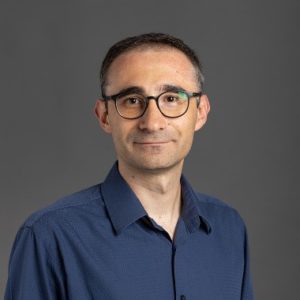
Milan Stojanovic
Astronomical Observatory, Belgrade, Serbia
Presentation Title: Capacity-building academic activities for the first scientific Serbian nano satellite MOSAIC
Capacity-building academic activities for the first scientific Serbian nano satellite MOSAIC
The institutional space investigation in Serbia dates back to 1887 when the Astronomical Observatory was founded. Since then, space science, encompassing investigations in astronomy and astrophysics, has been developed. However, research and development in space technology began only a few years ago, primarily through a CubeSat project called MOSAIC. This will be Serbia’s first scientific satellite and will be used primarily to observe X-ray radiation from the Sun. This initiative led to the establishment of a Research Unit for space science and technology at the Astronomical Observatory. The unit is tasked with advancing academic activities related to space science and technology in Serbia and identifying local capabilities for developing space technology in collaboration with relevant academic institutions and private companies. We will present possibilities and opportunities for future work in this field.
In this context, we will also present the first activities of the MOSAIC mission. We will discuss the mission specifications and requirements, as well as the first steps taken so far. The CubeSat is planned for launch in 2026. We will also present an investigation of space flight, orbital parameters, and sustainable orbit during the maximum of the Sun’s activity for this mission.
Milan STOJANOVIĆ – (b. 1984) graduated in Mathematics in 2009 and obtained PhD in Astronomy and Astrophysics in 2017 at Mathematical Faculty, University of Belgrade. He has been working at the Astronomical Observatory of Belgrade since 2011. He has been actively involved in creating a new Department for space sciences and technologies at the Astronomical Observatory of Belgrade in 2023. He co-organized first Space conference in Serbia “SEE Universe Space Conference 2020” in Belgrade together with Mijovic M from SerbSpace. He published 48 research and professional papers of that number 22 in leading astronomical journals. His primary research interests are in the fields of space technology, galactic dynamics and astrobiology. He was involved and contributed significantly to EU FP7 project BELISSIMA throughout the duration of the project. He is WP leader in another Horizon Europe project COSMOS4HE. He works as National Contact Person and Programme Committee Member for Space sector, Cluster 4 of Horizon Europe programme, appointed by Ministry of Science, Technological Development and Innovation of Republic of Serbia.
- Space technology
- Orbital flights
- Galactic dynamics and kinematics
- Habitable Galactic zones
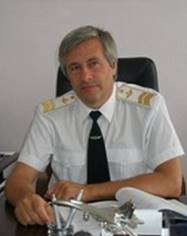
Oleksandr Zaporozhets
Łukasiewicz Research Network – Institute of Aviation, Warsaw, Poland
Presentation Title: Electric and Hybrid Electric Aircraft Conceptual Design Studies with Environmental Considerations
Electric and Hybrid Electric Aircraft Conceptual Design Studies with Environmental Considerations
About 2% of the total worldwide fossil fuel usage corresponds to fuel consumption in aviation. Hybrid renewable integration, electrification, hydrogenation and optimizations are necessary roadmaps for the transition towards low-carbon airport transportation systems. The rise of aircraft electrification with a few digital transformations in their operation and maintenance is making significant strides toward the sustainability of the aviation industry due to these absolutely new disruptive technologies and is a new challenge in air transportation development during the following decades. The presentation will cover the subjects of principles and approached used today in aircraft designs with principles of electrification of the propulsion and other onboard systems of the aircraft, how they influence on energy consumption and fuel burn in particular, emission, noise exposure and impact around the airports of civil aviation.
Between the 1978-2022 was employed in National Aviation University, Kyiv, Ukraine on the positions of Researcher, Leading Researcher, Professor, Head of the Chair, Director of the Institute, Vice Rector. From the April 2022 is employed in the Institute of Aviation (ILot) in Warsaw, Poland on a position of the Area Research Leader – Professor. Degree of the Dr.Sc. was obtained in 1998 by the defending the thesis “Development of Models and Methods of Information Provision for Environment Protection from Civil Aviation Impact”. The title of Professor was obtained in 2004 by decision of the Academic Council of the National Aviation University. ICAO CAEP (Committee on Aviation Environmental Protection) member between 2010-2020 by nomination from Ukrainian CAA, currently a member of the MDG, WG2 and ISG groups of the CAEP. ECAC AIRMOD (Aircraft Noise Modelling Task Group) and EAEG (European Aviation and Environment Group) member from 2010. SARES member from 2015 and a member of the management board from 2023.
- Aircraft noise and emission
- Disruptive technologies for aircraft and airports
- Green airport and operation
- Noise and emission exposure
- Noise and emission impact

Ramesh Agarwal
Washington University in St. Louis, USA
Presentation Title: The Conceptual Design, Analysis and Optimization of a Hydrogen Combustion Powered Aircraft
The Conceptual Design, Analysis and Optimization of a Hydrogen Combustion Powered Aircraft
In the effort to combat climate change worldwide, the aviation industry faces particularly complex design challenges in designing new, emission free vehicles. One potential solution to this problem is the use of hydrogen fuel as a means of propulsion. Hydrogen fuel has many benefits over traditional jet fuel such as a higher gravimetric energy density; however, it requires the aircraft to carry large, pressurized, cryogenic fuel tanks. This paper examines the design challenges, potential solutions, and the analysis methods for the design of a short to medium range hydrogen powered commercial airliner. To accomplish this goal, a comprehensive conceptual design and analysis code called WUADS (Washington University Aircraft Design Software) is developed. WUADS employs a combination of empirical and numerical methods to analyze an arbitrarily input aircraft’s overall weight, propulsive efficiency, and aerodynamic performance. This code is first validated on several existing aircraft to verify the accuracy of the analysis and optimization methodology of WUADS, then it is used to analyze several configurations of hydrogen powered aircraft. The first hydrogen powered configuration tested is a medium range airliner based on the performance metric of the Boeing 737-800, which makes use of propulsion through direct hydrogen combustion. The Preliminary analysis shows that the optimal placement of the required cryogenic hydrogen fuel tanks is inside the fuselage. With this knowledge, a hydrogen powered aircraft configuration is designed and optimized with an extended fuselage to fit the fuel tanks. This configuration demonstrates a clear increase in efficiency over the Boeing 737-800. The same analysis is conducted to design a hydrogen powered Boeing 767 with internal hydrogen fuel tanks.
Professor Ramesh K. Agarwal is the William Palm Professor of Engineering in the department of Mechanical Engineering and Materials Science at Washington University in St. Louis. From 1994 to 2001, he was the Sam Bloomfield Distinguished Professor and Executive Director of the National Institute for Aviation Research at Wichita State University in Kansas. From 1978 to 1994, he was the Program Director and McDonnell Douglas Fellow at McDonnell Douglas Research Laboratories in St. Louis. Dr. Agarwal received PhD in Aeronautical Sciences from Stanford University in 1975, M.S. in Aeronautical Engineering from the University of Minnesota in 1969 and B.S. in Mechanical Engineering from Indian Institute of Technology, Kharagpur, India in 1968. Over a period of forty-five years, Professor Agarwal has worked in various areas of Computational Science and Engineering – Computational Fluid Dynamics, Computational Acoustics and Electromagnetics, Control and Systems Theory, and Multidisciplinary Design and Optimization. He is the author and coauthor of over 600 journal and refereed conference publications. He has given many plenary, keynote, and invited lectures at various national and international conferences worldwide in over sixty countries. Professor Agarwal continues to serve on many academic, government, and industrial advisory committees. Dr. Agarwal is a Fellow thirty professional societies including the Institute of Electrical and Electronics Engineers (IEEE), American Association for Advancement of Science (AAAS), American Institute of Aeronautics and Astronautics (AIAA), American Physical Society (APS), American Society of Mechanical Engineers (ASME), and American Society for Engineering Education (ASEE). He has received many prestigious honors and national/international awards for his research contributions including the AIAA Reeds Aeronautics Award, SAE Medal of Honor, ASME Honorary Membership and Honorary Fellowship from Royal Aeronautical Society.
- Hydrogen Powered Aircraft
- Analysis of Hydrogen Powered B 737-800 with External and Internal LH2 tanks
- Analysis of Hydrogen Powered B 767 with Internal LH2 tanks
- Numerical Simulation & Optimization Aircraft Design Software
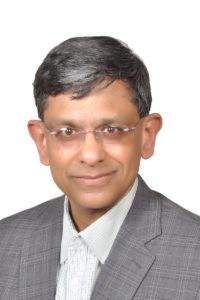
Ravi Rajamani
DRR2 CONSULTING, LLC and IDCA, USA
Presentation Title: Certification Challenges for New Generation Sustainable Aircraft
Certification Challenges for New Generation Sustainable Aircraft
There and more than 200 different initiatives around the world developing modern “advanced air mobility” aircraft. All these vehicles will need to be type, process, and operationally certified before they take flight. Even if only a handful of these succeed in progressing to the design and manufacturing stages, it is clear that the certificating authorities will be overwhelmed with applicants. One way to ease the pain is by increasing the role of models and simulation in the certification of aircraft, training devices, as well as pilots. In this talk, we will discuss the role of standards in making this process more efficient.
Dr. Ravi Rajamani is an expert on the application of model-based and data analytical solution techniques to aerospace systems. He has been active in the field of aerospace propulsion for over thirty years. He has published eight books, many book chapters, journal papers, conference proceedings, and patents. Prior to his current job, Ravi worked at Meggitt. UTC, and GE. He has a PhD from UMN, an MBA from UConn, an MSc from IISc, and a BTech from IITD. He is active within various SAE standards-setting technical groups, serves as the chair of their executive standards committee, and is the editor-in-chief of the SAE International Journal of Aerospace. He is a visiting research professor at the University of Connecticut and has been elected a fellow of SAE, of IMechE, and of CASE. Recently, he assumed the presidency of the Independent Data Consortium for Aviation, developing data governance standards for the aviation industry.
- Sustainable aircraft
- Type certification of new aircraft
- Electric propulsion
- eVTOL aircraft
- Standards for modeling and simulation
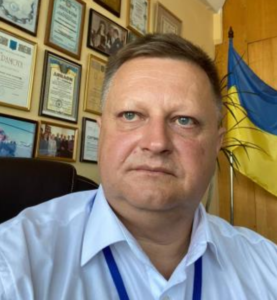
Sergii Boichenko
National Technical University of Ukraine
Presentation Title: Prospeсts for the production of sustainable aviation gasoline
Prospeсts for the production of sustainable aviation gasoline
The purpose of the article is to use low-octane base gasoline of domestic production and environmentally safe high-octane components without the content of lead compounds (for example, TEL) obtained from polymer waste, for the development of recipes (compositions) of environmentally safe aviation gasoline and substantiation of their optimal reformulated composition. This will create the necessary and sufficient conditions for the development, production and use of environmentally safe aviation gasoline with the necessary anti-knock properties that meet the technical requirements for quality and environmental safety indicators and will ensure the effective operation of aviation piston engines on civil aviation aircraft and civil and military UAVs.
- Object of research.
Modification of the composition of aviation gasoline based on domestically produced low-octane gasoline fractions with environmentally safe high-octane components that do not contain toxic TEL.
- Subject of research
Physico-chemical, operational and environmental properties of new aviation gasoline modified with high-octane components without TEL content
The main Scientific direction is the Efficient and Rational Use of Fuels, Lubricants & Technical liquids (Сhemmotology). Аctively working above introduction of Alternative Fuels in an Aviation and increase of Ecological properties of Fuels, Lubricants & Technical liquids. Increase the effectiveness of the prevention of motor fuel losses from evaporation during various technological operations.
I am mastering a new direction – Ekologistics (reversible logistics), utilization and recycling of transport’s operational materials.
Started working experience in 1990-1991 at the Civil Aviation Plant № 410. In 1998-2006 I was the head of the Petroleum Products Testing Center of the Ukrainian Center for Aviation Chemmotology and Product Certification «UCACH-SEPRO». In 2005 I was the head the Ukrainian Research and Training Center of Chemmotology and Certification of Fuel and Lubricants and Technical Fluids. In 2007 I founded and became the head of the chemmotology department of the National Aviation University. At the same time he was appointed Deputy Vice-Rector of the University for scientific work. Since 2011, after the reorganization of the Department of chemmotology, I headed the Department of Ecology at the Institute of
Environmental Safety of the National Aviation University. 05.2018–02.2019
- Sustainable Aviation Fuels
- Chemmotology
- Aviation fuel supply
- Chemmotological reliability
- BioJet
- Gasoline

Toni Ivanov
University of Belgrade, Faculty of Mechanical Engineering, Serbia
Presentation Title: Novel Design of an Optimized Morphing EDF Duct
Novel Design of an Optimized Morphing EDF Duct
Electric Ducted Fans (EDF) provide several advantages over conventional propellers. In hover they can provide additional thrust for the same power and rotor diameter meaning smaller footprint of the aircraft on the take-off/landing area. In axial flight the shroud reduces the tip losses of the rotor especially in higher flight speeds. Unfortunately, due to the difference in velocity streamlines in both flight regimes, a shroud optimized for hover will have negative effects on the propulsion efficiency in axial flight. This means that a compromise must be made in the design of a propulsion system intended for fixed wing VTOL aircrafts with efficient axial flight capabilities for ex. using separate systems for hover and for axial flight. Here, an optimization methodology is proposed for a novel design of a morphing ducted fan. Firstly, the optimal geometry for hover was obtained by genetic algorithm optimization. After that, GA optimization was used to obtain the optimal geometry for hover with the introduction of constraints as to be able to create a geometry capable of morphing. In the end, the internal structure of the duct which can provide accurate control of the inlet and outlet was defined by utilizing techniques similar to the ones used in morphing wing designs.
Toni Ivanov is an aerospace engineer and an associate professor at the University of Belgrade, Faculty of Mechanical Engineering. He has more than 10 years of experience in the design, analysis, optimization and experimental investigation in the aerospace field. He has worked on several research and industry projects for both commercial and defense companies. He holds a PhD degree in aerospace engineering from University of Belgrade, Faculty of Mechanical Engineering. His work is mostly oriented toward improving efficiency in aerospace propulsion systems and advancing technologies for a more sustainable aviation. In addition to his R&D work, he is a mentor of the aerospace engineering student team “Beoavia”.
- Propulsion
- Electric Ducted Fans
- Morphing Structures
- Optimization

Umut Durak
German Aerospace Center (DLR) - Institute of Flight Systems , Germany
Presentation Title: Setting the Avionics Research Agenda for Zero-Emission Flight
Setting the Avionics Research Agenda for Zero-Emission Flight
As the expected growth in air traffic for the next two decades almost approaches the 4% mark a year, decarbonization is pronounced loud as the key to sustainability in aviation. Aircraft-related technology and standards are in the International Civil Aviation Organization (ICAO) basket of measures to achieve carbon-neutral growth. This talk renders the current advances in aviation toward zero-emission flight, identifies the key requirements for future avionics systems, and introduces the avionics research agenda of the Institute of Flight Systems in the German Aerospace Center (DLR).
Umut Durak is the Group Leader for Avionics Systems in the Institute of Flight Systems at the German Aerospace Center (DLR). He is also a Professor for Aeronautical Informatics in the Informatics Institute at the Clausthal University of Technology. His research interests concentrate on engineering of software intensive airborne systems. He has published 5 books and more than 80 papers in various conference proceedings and journals. He is an Associate Fellow and the Chair of Software Technical Committee at the American Institute of Aeronautics and Astronautics (AIAA) and an Executive Board Member of the German Simulation Association Arbeitsgemeinschaft Simulation (ASIM).
- Interest-1

